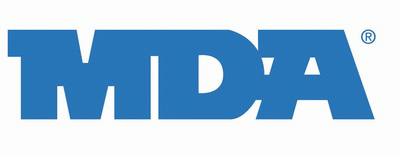6 June 1944
Posted: Wednesday, June 06, 2012 by Travis Cody inToday is the 68th commemoration of the Allied invasion of the Normandy beaches on 6 June 1944. I've written before about these events.
- In 2008 I wrote about US Army E Company, 506th Regiment, 101st Airborne Division
- In 2009 I wrote about the diversity of the combined Allied effort
- In 2010 I wrote about US Army 2nd Raider Battalion
- In 2011 I wrote about the British 6th Airborne Division
The invasion came nearest to failure on Omaha Beach.
 The 1st Infantry Division, the Big Red One, was assigned the eastern section of the beach. The western section fell to the 29th Infantry Division, as yet untested in combat. The Rangers were also assigned to the west. Securing this beachhead would link the British at Gold Beach to the US VII Corps at Utah Beach. Failure at this point would leave flanks exposed to counter attack, as well as cut off any possibility of moving inland and linking up with the airborne element of the assault.
The 1st Infantry Division, the Big Red One, was assigned the eastern section of the beach. The western section fell to the 29th Infantry Division, as yet untested in combat. The Rangers were also assigned to the west. Securing this beachhead would link the British at Gold Beach to the US VII Corps at Utah Beach. Failure at this point would leave flanks exposed to counter attack, as well as cut off any possibility of moving inland and linking up with the airborne element of the assault.The first challenge for the assaulting forces was to get landing craft close enough to the beach to offload personnel, tanks, and other equipment. The approach to the beach was mined. Then the landing craft faced a tidal slope that caused water levels to severely fluctuate during high and low tide. Many craft floundered and sank. Others pulled up shorter than they realized, with troops climbing over the side and trying to follow sandbars toward shore. Many drowned in water over their heads. Craft that did make the beach often landed in the wrong place, and all were subjected to withering machine gun fire as soon as landing ramps dropped.
The next challenge was the 270 yard killing zone between the water's edge and the berm. Belgian Gates dominated the approaches to shore, each fitted with mines. Littering the beach were steel hedgehogs and tetrahedrons with more anti-personnel mines. Beyond these were stakes dug into the sand, called Teller poles, each with an anti-tank mine fixed to the front and pointed at the onrushing invaders. Finally, there were mines embedded on the slopes of the forward berm and the bluffs to the sides. The defenses were situated along natural draws which would drive troops into funnels, subjecting them to pointed cross fires from which there was little or no cover.
- 7,800 infantry troops from the German 352nd Infantry Division, 726th Grenadier Regiment, and 916th Grenadier Regiment
- 8 artillery bunkers
- 35 pillboxes
- 4 artillery pieces
- 6 mortar pits
- 18 anti-tank guns
- 45 rocker launcher sites
- 85 machine gun sites
- 6 tank turrets
The second wave was larger, but encountered many of the same obstacles as the first. In addition, since the first wave couldn't get off the beach, each succeeding wave of troops began to stack up off shore or directly on the beach. Getting up to the seawall and out of the line of fire became the goal of every man on the beach.
Of course, we know that the Americans did eventually secure Omaha Beach and move inland, as the Allies did on every invasion beach. How did they finally manage it at Omaha? By assaulting the bluffs and by using Bangalore torpedoes at the base of seawalls. By acts of audacity and stunning heroism. And, sometimes, just by making the decision not to give up.
Brigadier General Norman Cota (1893-1971) assistant division commander of the 29th Division, landed on the beach with a reasonably intact division. He rallied his troops, organized his engineers in a daring assault on the seawall, and encouraged the Rangers to lead the way through the breach. He told his men, "...we are being killed on the beaches. Let us go inland and be killed." General Cota led from the front, at great personal risk.
 It took such inspiration and encouragement, and sometimes outright bullying to get soldiers to do the job under the deadly intense enemy machine gun and artillery fire. Colonel George Taylor (1899-1969) of the 1st Division famously said, "Two kinds of people are staying on this beach, the dead and those who are going to die - now let's get the hell out of here!"
It took such inspiration and encouragement, and sometimes outright bullying to get soldiers to do the job under the deadly intense enemy machine gun and artillery fire. Colonel George Taylor (1899-1969) of the 1st Division famously said, "Two kinds of people are staying on this beach, the dead and those who are going to die - now let's get the hell out of here!"Once the soldiers got started, there was no stopping them.
That's just a very brief sketch of what went on during the early part of the invasion, and only at Omaha Beach. Entire books have been written about what happened just on the first day. The Americans suffered over 3,000 wounded, killed, or missing that first day on Omaha, and the Allies suffered more than 12,000 casualties along the breadth of the invasion just on that longest day. And it was still a very tenuous beachhead.
Four Medals of Honor were awarded for actions on 6 June 1944. For additional information, including personal stories, please click here.
It is also my grandfather's 88th birthday today. He lied about his age in 1940 so he could go to see as a Merchant Marine. Happy Birthday Grandpa!

























Grat post Trav. Happy Birthday to your Granddad, God Bless Him. x